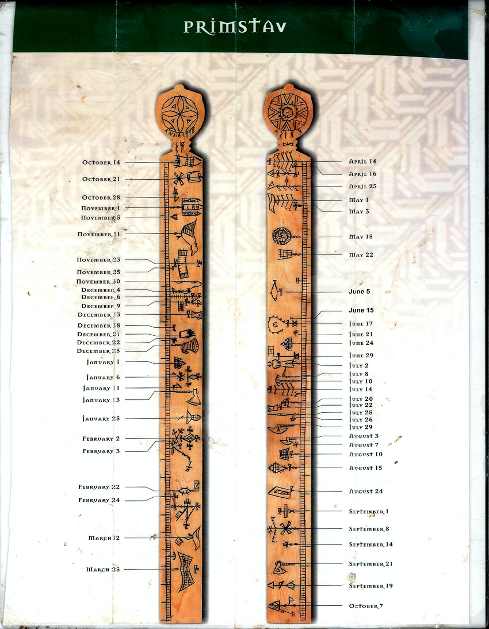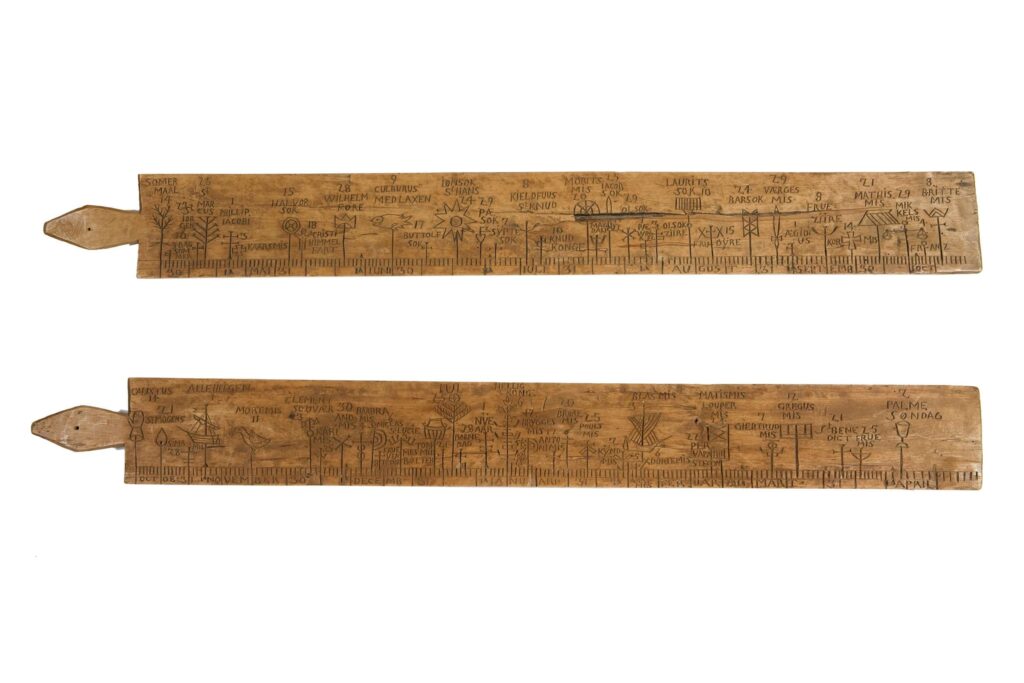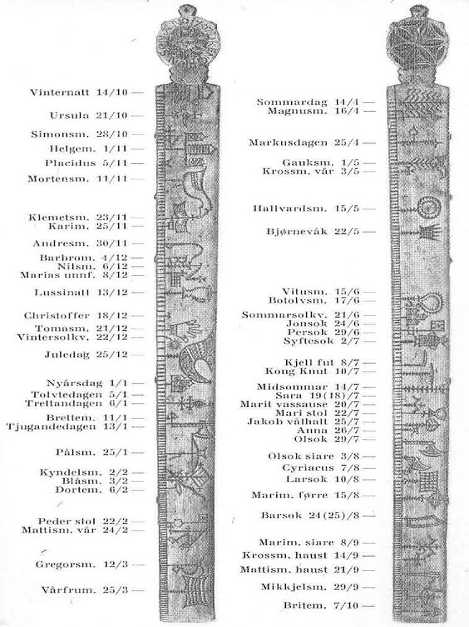A common interpretation of the name primstav is that it comes from the Latin prima meaning “first” and the Norwegian word stav meaning “stick.” In old Norse, prim also meant “new moon.” The stick had a winter side and a summer side, each half year turning at the October 14 and April 14 notch. These were traditionally the days on which rural business such the start or change dates for hired help on farms went in effect. In pagan times, those dates were two of the three major dates of great sacrifices, the third being January 14, midwinter. Local conditions would necessarily dictate slight variations in adherence to the traditions, but generally all surviving examples appear to record the same dates of observance.
UNDERSTANDING THE PRIMSTAV
Our ancestors saw the structure of each new year as a repeat of the one before. The old Norwegian calendar stick – the Primstav – laid out the days and the key events of the year. The annual cycle was forever the same, generation after generation.
Primstav (or Runestav) are traditional Scandinavian calendar sticks dating back to at least the 12th century (and perhaps further).
For people of Scandinavia, this was particularly important. Given the short seasons for growing their food, it was imperative to know the best time for sowing, or the time when cattle might safely leave the barn to graze.
In measures that might vary from valley to valley, they notched off the days from that week in winter when the sun was barely seen, or from the day when ice broke on the lake. The days were marked and carved on a stick or board and eventually an elementary almanac of weather and crops took form.
The primstav uses the 19-year metonic cycle to corelate the lunar month ad the solar year into a perpetual calendar. Thought to have originated from Latin meaning the new moon – Prima Lunae. Primstaves provide the means for relating the lunar calendar to the solar calendar.
The Primstav was the primary means of keeping track of time in Norway. The primstav includes lines for each day of the year and symbols marking important dates.


Each year followed the same pattern
At the first full moon after midwinter solstice a new primstav is started to mark the beginning of the year and counts through a 7 day cycle (much the same as the Gregorian calendar) usually marked with runes to signify the weekdays (in the case of a runestav) or marked with images (for a primstav), such as the carved horn (in the last picture) that represents Julaften. The first image in the same picture is for the midwinter solstice.
A primstav usually has two sides, a summer side starting on April 14 and a winter side starting on October 14. The dates reflect the yearly rhythm of the agrarian societies at northern latitudes in medieval Europe: one period for production and one for consumption. In Norway there are about 650 known primstaver, fashioned from late 15th to the early 19th centuries.
The primstav uses the 19-year metonic cycle to corelate the lunar month ad the solar year into a perpetual calendar. Thought to have originated from Latin meaning the new moon – Prima Lunae. Primstaves provide the means for relating the lunar calendar to the solar calendar.
The Primstav was the primary means of keeping track of time in Norway. The primstav includes lines for each day of the year and symbols marking important dates.
Because it was based on the Julian calendar, it could be used year after year without modification. Once the Gregorian calendar was introduced, it replaced the Julian calendar which caused the Primstav use to eventually become obsolete. When in 1700’s, the modern Gregorian calendar came into use, dates were brought forward 11 days. There was some question as to whether the feast days should be observed on the old dates or the new. Since both alternatives were used, there came to be variations in different parts of the country. However, tradition kept the use of primstavs for another two centuries.

Historic Primstav in Color 
Historic Primstav

